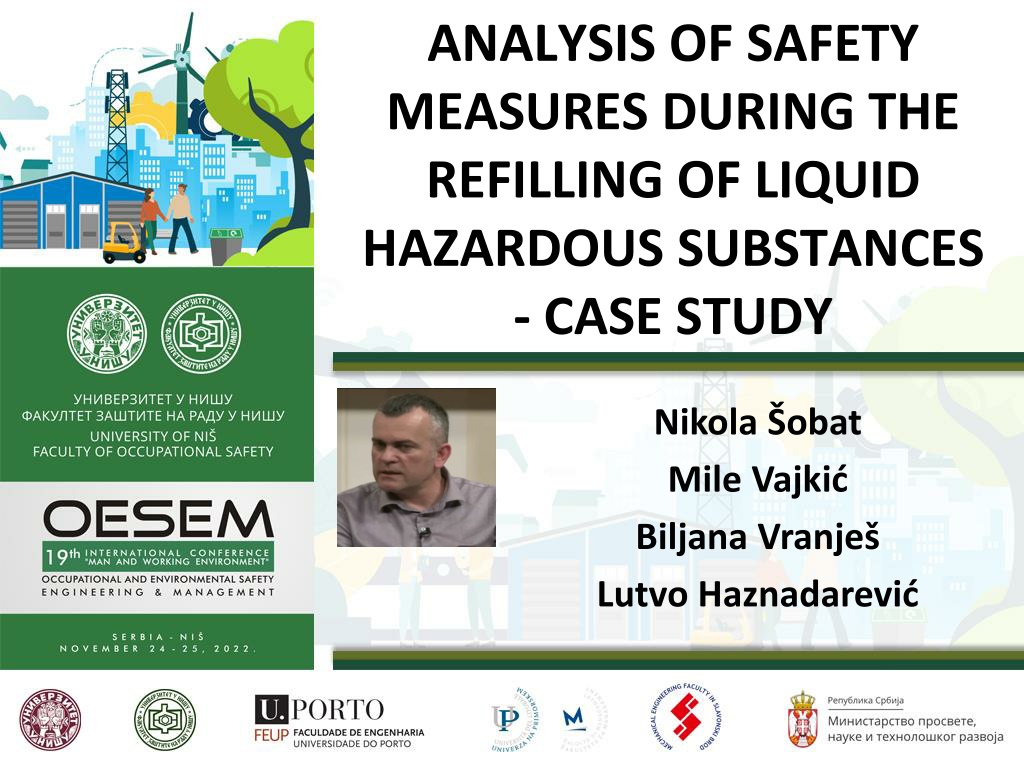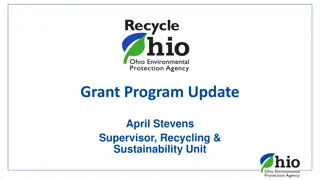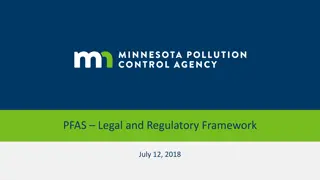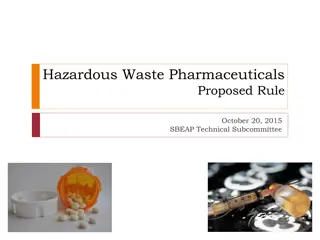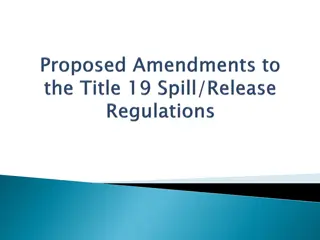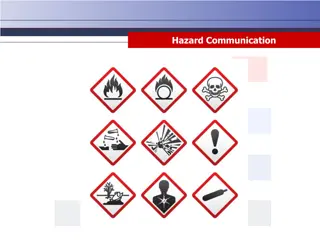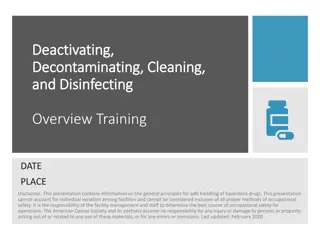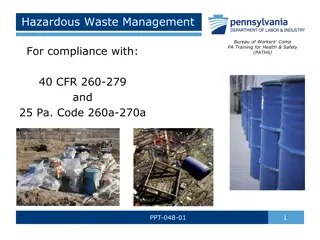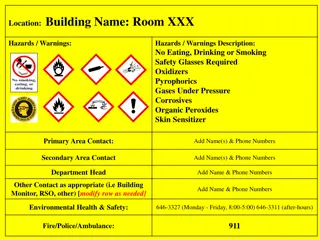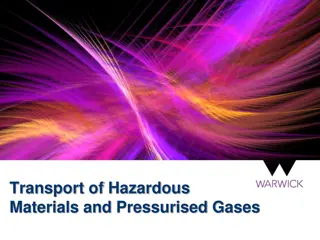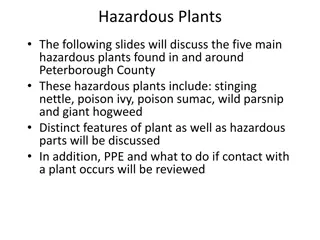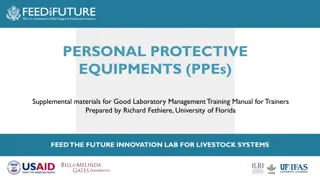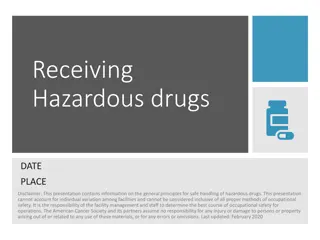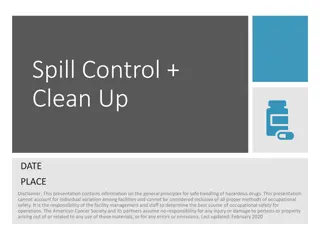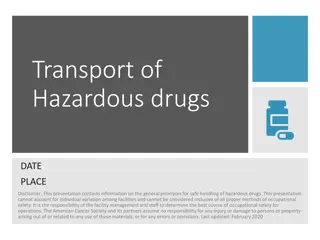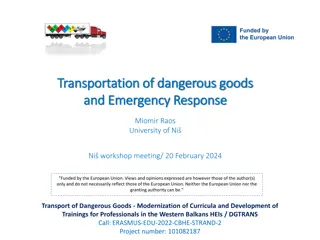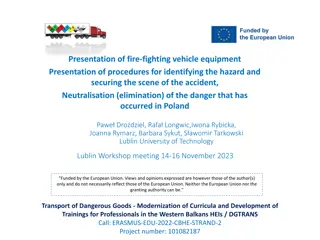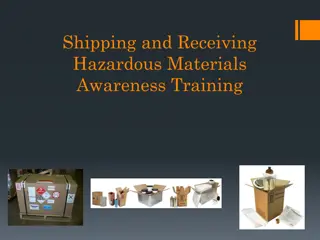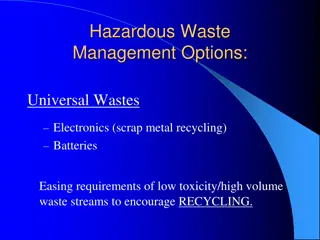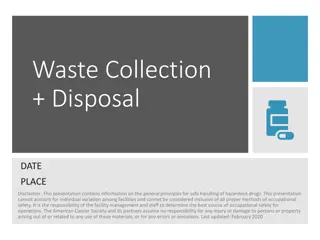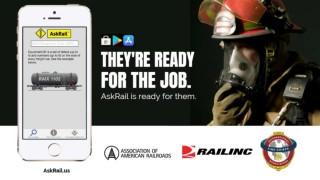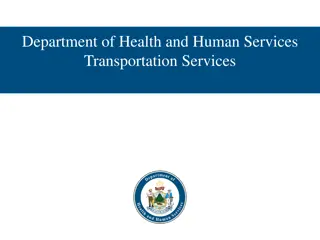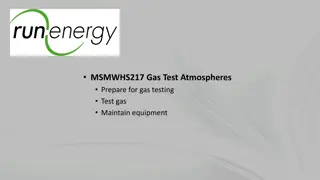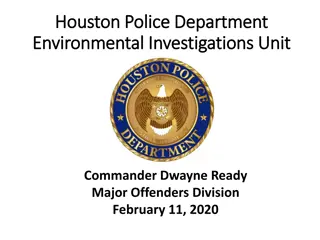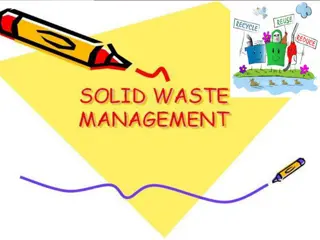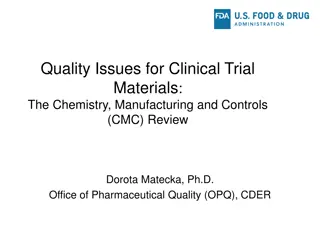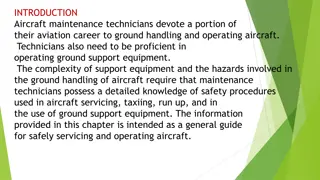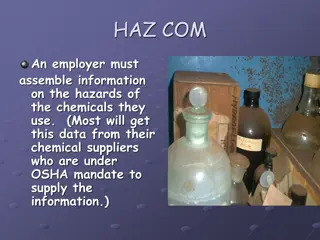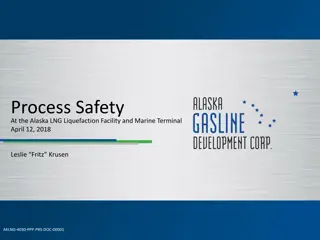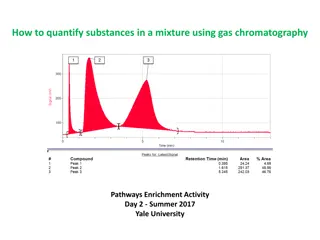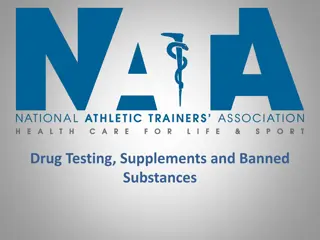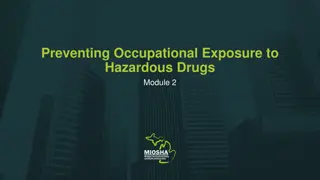Enhancing Safety Measures for Refilling Hazardous Substances
Modern technical systems pose risks of accidents and injuries during the transport and refilling of hazardous substances. Preventive measures through engineering studies and adherence to international regulations like ADR are key to avoiding accidents. Special refilling stations equipped for safe transfer of flammable liquids play a crucial role in mitigating risks during charging and discharging processes. Safety management systems must effectively identify and control risks to prevent accidents.
Download Presentation

Please find below an Image/Link to download the presentation.
The content on the website is provided AS IS for your information and personal use only. It may not be sold, licensed, or shared on other websites without obtaining consent from the author. Download presentation by click this link. If you encounter any issues during the download, it is possible that the publisher has removed the file from their server.
E N D
Presentation Transcript
ANALYSIS OF SAFETY MEASURES DURING THE REFILLING OF LIQUID HAZARDOUS SUBSTANCES - CASE STUDY Nikola obat Mile Vajki Biljana Vranje Lutvo Haznadarevi
Modern technical and technological systems, despite the obvious progress, still carry great risks of system elements' disruption of the working and living environment and the occurrence of occupational injuries, deaths, material damage, fires, explosions, and accidents. The process of storing and handling hazardous materials is a complex process and very demanding in terms of safety. Tank trucks are a source of danger both during transport and during the process of refilling (loading and unloading) liquid hazardous substances. Flammable liquids and gases are transported on various roads every day. The transport of such substances is becoming a topic of general interest, especially for companies, organizations, and institutions that face this problem. When an unforeseen event occurs, questions of responsibility of the carrier, manufacturer, as well as other competent authorities are raised.
Most of these accidents could have been avoided if preventive and corrective measures based on engineering studies, projects, recommendations, and instructions had been applied. The transport of dangerous goods in international road transport is defined by national laws and regulations as well as international regulations according to the ADR agreement (European Agreement concerning the International Carriage of Dangerous Goods by Road).
A refilling station (Figure 1) is a specially designated place equipped with devices permanently installed for the connection of transport tanks or tankers for the refilling of flammable liquids. The refilling of flammable liquids means the transfer (refilling) of flammable liquids from the tank to the transport tanks (tank trucks, tank wagons, tankers, etc.) and closed containers or vice versa. Figure 1. Scheme of fuel discharge by free fall from a tank truck (Poljak, 2013)
The charging and discharging process is risky due to the following reasons: charging and discharging: two systems are involved vehicle and tank; charging and discharging: gases are released and danger zones are formed (Figure 2); charging requires appropriate equipment that must be located and used in hazardous areas. Figure 2.Danger zones at the filling station (IECEx and ATEX Certification, 2022)
The safety management system should identify the controlled risk and use it to effectively mitigate the occurred accident. Given the complexity of accident situations during transport and handling of hazardous substances, attention must be paid to: 1. The technical aspect: properties of flammable liquid; characteristics of devices and equipment; vehicle characteristics; characteristics of buildings and the surroundings. 2. The organizational aspect: the human factor. 3. Actions and procedures during the handling of hazardous substances.
Analysis of the safety conditions of facilities potentially dangerous to human health and safety and the environment, which include filling stations, involves determining: critical points in the system; causes of events relevant to risk assessment; event trees with potential consequences (Figure 3). Figure 3.Event tree with potential consequences
Based on the measurements and analysis conducted on a specific example of the refilling of hazardous substances, specific critical places and situations were identified and corrective measures were proposed, as well as the following internal control measures to increase safety: adequate assessment of employees during hiring; workers should safely perform tasks and duties and follow regulations (revision of process refilling hazardous substance instructions to be as precise and clear as possibile); installation of additional technical protection (protective ramp) when liquid hazardous substance refilling is in progress; a more precise legal definition of the Stop - tank truck connected warning board appearance; mandatory use of personal protective equipment (for outdoor work, personal cold-weather protective gear (clothing, footwear, gloves, hats); installation of automatic switches on the tank for static electricity removal in order to eliminate the human factor influence; installation of automatic fixed fire extinguishing systems (sprinklers) above the tank truck at the place where the fuel transfer (refilling) is performed to be engaged at the first hint of smoke or flame in case of an accident; maintaining the hygiene of work premises and personal hygiene in order to prevent the possible intake of chemical substances into the body; measurement of chemical substances at several measuring points in the workplace where the workers spend their time; prohibition of smoking and food consumption in the workplace.
CONCLUSION The high probability of accidents and environmental pollution indicates the need for daily risk assessment, and the development of policies to anticipate, prevent, mitigate, and monitor significant negative impacts on people, property, and the environment. To determine the degree of danger in case of accidents during storage and handling of hazardous substances, in addition to the characteristics of hazardous substances significant for assessing the impact on human safety and health, it is necessary to identify the process critical points and plant critical points, obtain the values of harmful substances, and determine in what amount and in what way they can uncontrollably be released from the plant. Employees who are involved in transporting liquid fuels and who participate in the process of their refilling must be fully educated and trained to independently perform all actions related to the transport and refilling of hazardous substances and to apply and adhere to all national and European legislation concerning the transport of dangerous goods.
